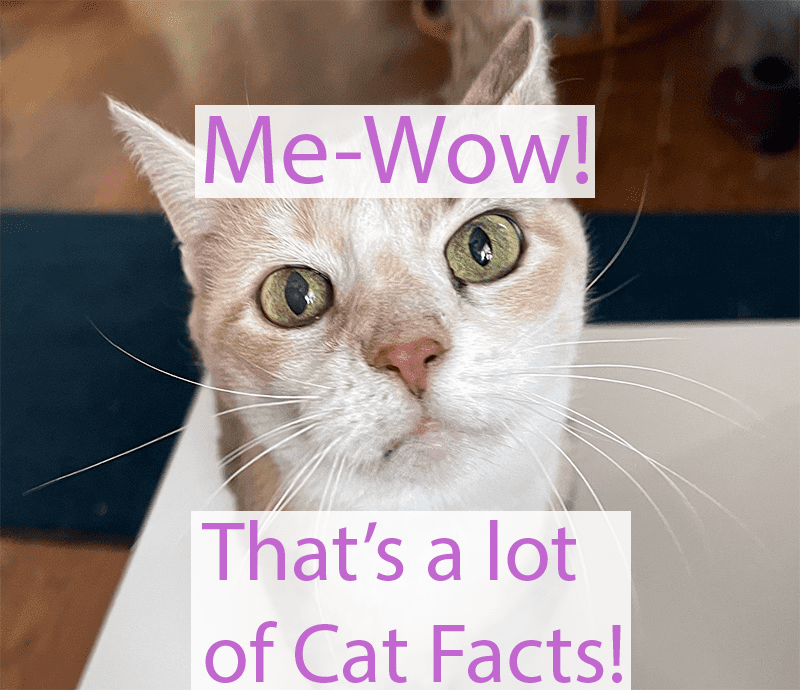
Our goal was to put together the PURRFECT List of Cat Facts just for you!
This project was fun for us because cats are absolutely amazing animals and we love talking about them!
This list is HUGE, so we’ve broken it down into easy sections.
You can use the jump links to go straight to the cat facts that you’re looking for.
Or, read through the entire list from start to finish for maximum cat facts enlightenment!
In this Article We Cover:
- The Top 10 Most Amazing Cat Facts!
- The Best Cat Facts for Kids
- Fabulously Fun Facts About Cats
- Furry Facts About Cats: (What’s in a Cat’s Coat?)
- Cat Behavior Facts: (What is My Cat Thinking?)
- Maine Coon Cat Facts: (The Big Fuzzy)
- Orange Cat Facts: (Marmalade Meows)
- Tuxedo Cat Facts: (Pawing Out in Style)
- Calico Cat Facts: (Cuteness with a Twist)
- Siamese Cat Facts: (If You Please)
- Random Cat Facts: (The Grand Finale of Cat Facts)
The Top 10 Most Amazing Cat Facts!
1. The Egyptians were NOT the first people to keep cats as pets!

Although the Ancient Egyptians are well known for their reverence of our beloved cat friends, they were NOT the first ones to invite a cat to share time and snacks with them.
Currently, it is believed that this happened at least 4,000 years earlier! Archaeologists discovered a pet cat grave on the Mediterranean island of Cyprus that dates back to 9,500 years ago.
The human owner of this ancient cat was found buried nearby. This likely indicates a strong bond between the two of them in life.
2. A cat BRAIN has TWICE as many neurons as a dog brain.
Cat owners will probably agree that this makes sense to them! Dog owners might point out that this doesn’t necessarily settle the debate about who uses their neurons better of course!
A cat is thought to be a better problem solver while a dog is thought to possess superior social intelligence.
3. A house cat is a VERY close relative of the TIGER.

A house cat has about 96% of the same DNA as a TIGER! Maybe this is why they seem so confident all the time.
4. If necessary, cats can drink water from the OCEAN. Humans cannot.
How’s that for a superpower? A cat can use their kidneys to desalinate the salty ocean water. Humans do not have this ability.
5. Cats DREAM just like humans do!
We know that cats love to sleep, and just like us, they experience the deep stage of sleep called REM (Rapid Eye Movement).
This also means that cats can have nightmares too! So, remember to approach a sleeping cat with care!
6. Cats have a HOMING BEACON ability.
We don’t fully understand this ability, but cats are somehow able to navigate home with uncanny precision. This is sometimes referred to as “psi-traveling”.
It is believed that cats may be able to navigate using the angle of the sun or specialized brain cells that act like a compass.
7. Every cat has a UNIQUE nose print. Just like a human fingerprint.
This might mean that if cats were detectives, they would dust for nose prints! We imagine that a cat detective would probably be very busy tracking down “missing cat treats”.
8. The OLDEST known cat lived to be 38 YEARS OLD!
This cat’s name was Creme Puff and she was born in 1967 in Austin Texas. Creme Puff lived until the year 2005! That’s a lot of years filled with cat adventures.
9. Cats KNOW how to say “I Love You”.
It is believed that cats will use a slow blink to communicate that they trust and love you. Cats depend on their eyes to alert them to danger, so they use a slow blink to show a deep trust in you.
You can say “I love you” back by returning the slow blink.
10. Cats SLEEP about 15 hours (63%) of EVERY DAY!

There are only 24 hours in a day! Cats feel it is important to get plenty of rest and so they spend about 15 hours (63%) of their time sleeping.
Cats absolutely love naps. They really do have life all figured out.
The Best Cat Facts for Kids
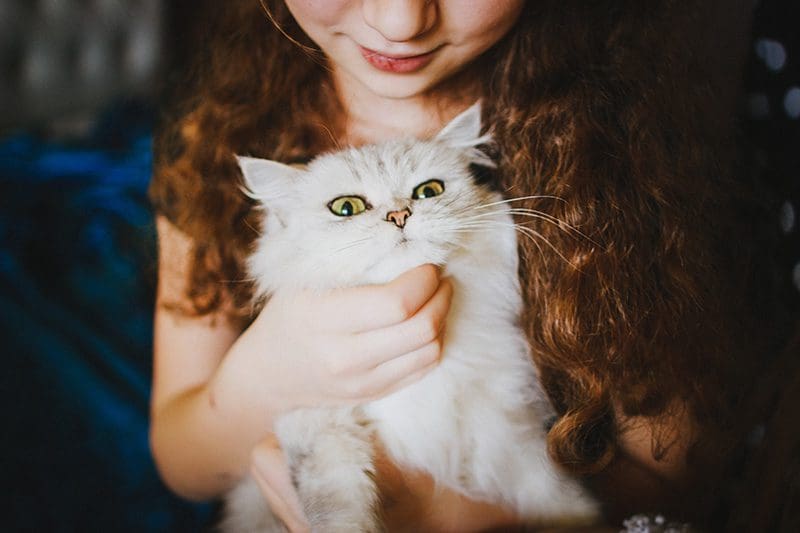
1. Cats have MORE BONES than humans do.
Humans have 206 bones, while cats have 230! That means cats have 24 more bones than you do!
Most of the extra bones are found in the cat’s spine which has 53 vertebrae compared to only 34 for humans.
Those extra spine bones are the reason that cats are so flexible!
2. Cats use their WHISKERS to make important decisions.
It may look like a cat’s whiskers are just for decoration, but they actually use them to feel things around them.
Cats will use their whiskers to test if they can fit into a small space. If they guess wrong, they can get stuck or injured.
This is why it is so important never to cut a cat’s whiskers. They need them every day!
3. Cats can run VERY FAST. They have a TOP SPEED of about 30 mph!
Cats can run much faster than the average human.
Not only that, but they can run faster than the best Olympic runners as well.
It’s a good thing cats aren’t allowed to enter the Olympics!
4. Cats can JUMP almost SIX TIMES their height!
Cats are legendary jumpers. If we could jump 6 times our height, we could easily jump onto the roof a 3 story building!
5. Humans have some WILD NAMES for groups of cats.
A group of kittens is usually called a “litter”, but we also sometimes call them a “kindle.”
A group of adult cats is sometimes called a clowder, a glaring, or a clutter.
So you could say, “I saw a kindle of kittens playing with a clutter of cats.”
But, just get ready for a few puzzled looks!
Fabulously Fun Facts About Cats

1. For TWENTY YEARS, a cat named Stubbs was the MAYOR of the town of Talkeetna.
Stubbs was a politi-cat in a small town in Alaska called Talkeetna.
He won several uncontested elections for Mayor of the town.
It was mostly a ceremonial post which was fine by Stubbs. He wasn’t much for the legislative process anyway!
2. Are you running the VACUUM or is your cat PURRING?
The record for the loudest cat purr is about 68 decibels. This is about the same volume as a vacuum cleaner!
Merlin, a black and white cat who hails from the UK, rumbled out this record breaking purr of about 68 decibels.
An average cat purr is around 25 decibels. So, Merlin was an exceptional rumbler!
3. Boy cats are often south paws!
Boy cats have a higher chance of being left paw dominant. Girl cats are more likely to be right paw dominant.
Some cats (both male and female) are ambidextrous.
Furry Facts About Cats: (What’s in a Cat’s Coat?)
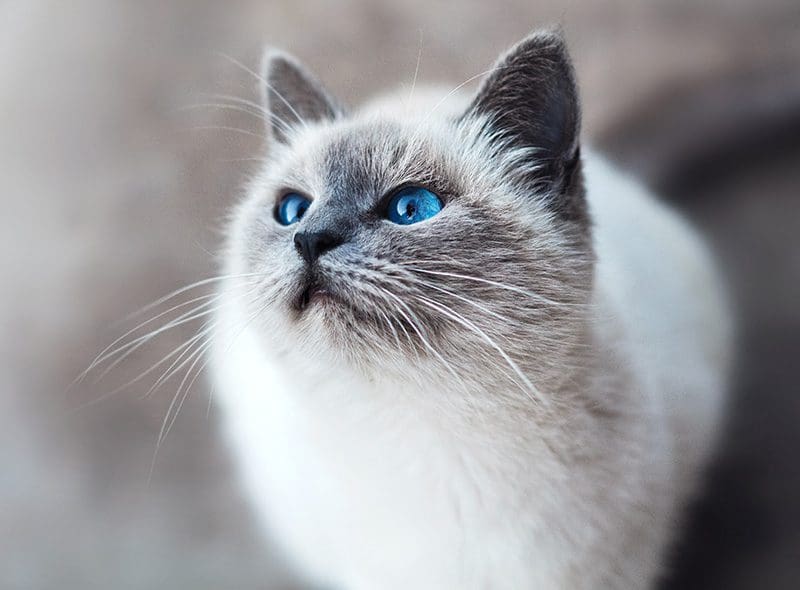
1. Most cats have TWO-LAYERED COATS!
These are referred to as “double coated” cat breeds. However, there are a few exceptions such as the rex, sphinx, and peterbald breeds.
Double coated cats have an outer coat and an under coat. The outer coat has longer, coarser hairs that are protective in nature.
The under coat is softer and helps to keep the cat warm.
2. Cats have THREE different HAIR TYPES.
The guard hair is a protective hair type in the outer coat. These are shiny and have the brightest colors.
The guard hair is connected to the arrector pili muscle which allows the cat to lift or close their coat when they are too hot or too cold.
Secondary hair is what makes up the under coat. This hair is porous, soft, and downy. The secondary hair provides insulation and protects the cat’s delicate skin.
The vibrissae (or whiskers) are thick, sensory hairs located strategically on the cat’s body. These are connected to nerve endings and allow the cat to feel their environment as well as changes in pressure.
Cats also have whiskers on their front legs that allow them to feel prey in their paws.
3. Most people are NOT ALLERGIC to cat hair.
The protein in the cat’s saliva residue (called fel-d-1) and dander is the actual cause of cat allergies for most people.
Hairless cats have increased dander since they lack a protective fur coat and their skin must compensate.
Since the dander causes allergies while the fur does not, the increased dander of a hairless cat can actually be worse for allergies.
This is also the reason why shaving a cat is not a solution to allergic reactions.
4. There are only a FEW fundamental COAT colors.
The main coat colors are considered to be black, orange, and white.
All other cat coat colors are a combination of these main coat colors.
5. Interested in more information on your cat’s coat?
If you’d like to learn more, we have an article all about cat coats, brushes, combs, and brushing tips!
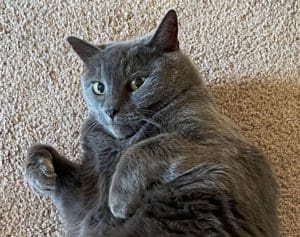
We are often asked what the best cat brush is. In this article, we discuss our recommendations for the best cat brushes and brushing techniques for your particular cat.
Cat Behavior Facts: (What is My Cat Thinking?)
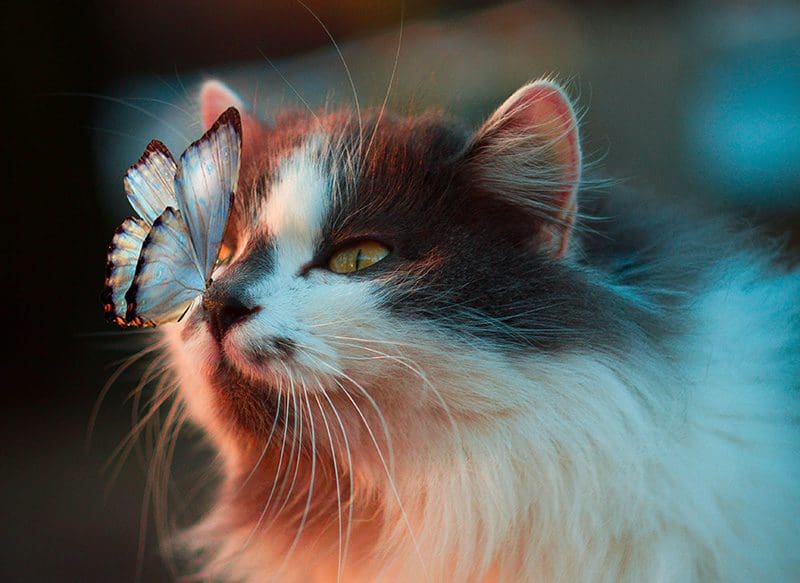
1. Cats are CREPUSCULAR.
Cats are the most awake and active at dawn and dusk each day. We refer to this behavior as crepuscular.
It is believed that cats exhibit this behavior because their prey is most active at these times.
This means that cats believe dawn and dusk are the best times to go hunting!
2. Cats like a CLEAN bathroom.
Cats are very particular about their litter box. Bathroom issues can often be traced to a dirty litter box.
We recommend having one litter box for each cat in your house, plus one more.
3. Cats will PURR when they are SAD as well as when they are HAPPY.
It is believed that a cat will purr to soothe itself.
So, this means they will make this noise when they are feeling sick or stressed.
Of course, they will also make the sound when they are very happy.
4. Cats NEED exercise.
Just like humans, cats benefit from regular exercise.
The best way to exercise your cat is to spend time playing with him.
If you play with your cat each day, he will usually sleep better at night.
5. CATNIP can make your cat go WILD!
There is a chemical in catnip called nepetalactone and it makes some cats go absolutely wild!
If your cat is affected this way, give them some space when you treat them to catnip.
The effects of nepetalactone usually wears off in about 15 minutes.
Catnip is harmless and non-addictive for your cat.
6. Cats are TERRITORIAL and that includes YOU!
Cats have scent glands in their cheeks that they use to mark their territory.
So, if your cat rubs his face on you, he is saying that he loves you.
But, he is also saying “This human is mine!”.
7. Cats like to make BISCUITS.
When cats are kittens, they will knead their mother’s belly while nursing.
When they grow up, they will knead things to show that they are happy.
This is often called “making biscuits” and it is adorable.
8. Cats don’t WAG their tails, they THRASH them!
If a dog is wagging their tail, it can often mean they are happy.
Cats are a different story. They will thrash their tails when they are getting upset.
If you see your cat start whipping his tail, it’s time to give him a little personal space!
9. Is your cat HYPER?
We have an article that discusses how to calm a hyper cat down. It also provides more information on various cat behaviors.
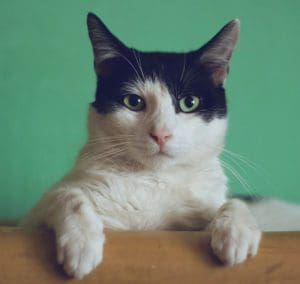
As a professional cat groomer, I am often asked how to calm a cat down. Here are the best products and tips I’ve found over the years.
Maine Coon Cat Facts: (The Big Fuzzy)

1. The Maine Coon cat is known as a Gentle Giant.
Maine Coon cats are generally very big and very social. They are one of the largest domesticated cats.
2. The Maine Coon cat originated in the state of Maine.
Part of the reason these cats are “big fuzzies” is to deal with the cold winters of Maine, USA.
3. Maine Coon cats LOVE to sing.
The Maine Coon cat is known for loud meowing, yowling, and trilling.
They are a very vocal breed of cat and thought of as excellent singers (according to them).
4. Maine Coon cats are built for the cold weather.
They have large paws that function as snowshoes when walking in the snow.
They also have extra fur on their back sides which makes sitting down in the snow or ice easier to do.
Think of it as sitting in the snow while wearing regular pants versus wearing snow pants.
Maine Coon cats are wearing snow pants.
5. Maine Coon Cats are also known as American Forest Cats.
There are several different names for the Maine Coon Cat, one of which is the American Forest Cat.
There is speculation that the Maine Coon Cat is a direct descendent of the Norwegian Forest Cat.
If that’s true, then “American Forest Cat” is indeed a fitting name for this beloved cat.
Orange Cat Facts: (Marmalade Meows)
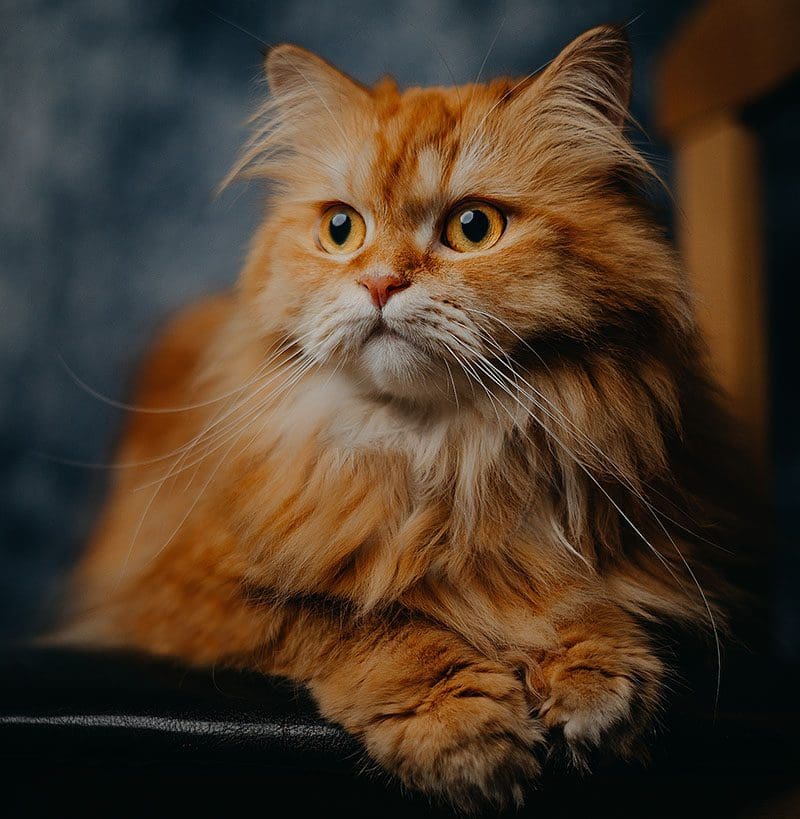
1. Most orange cats are male.
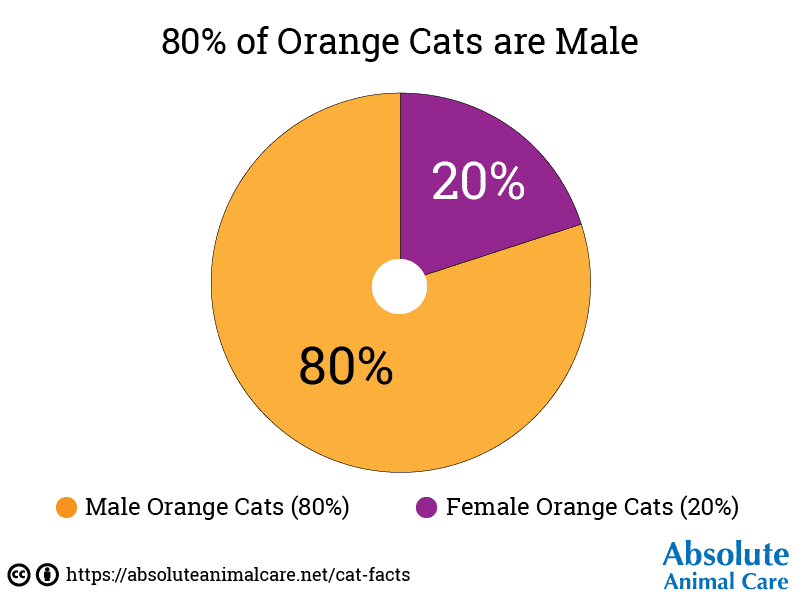
About 80% of orange cats are male and around 20% of orange cats are female.
2. If a cat is orange, then it is also a tabby.
Tabby refers to a coat pattern in cats and there are 5 different tabby coat classifications (classic, mackerel, patched, ticked, and spotted).
All orange cats have the tabby coat pattern and are often called “orange tabbies”.
In fact, every single breed of cat is considered to have one of the tabby patterns.
3. All orange tabby cats have a striped “M” on their forehead.
All tabby coat patterns feature this M pattern and that includes the orange tabbies!
4. Cat fanciers actually call ORANGE cats RED.
Orange cats are referred to as “Red cats” in official cat show circles.
Cream cats is a name used for Orange cats with white mixed in.
However, the official name for Cream cats is “Dilute Reds”.
Tuxedo Cat Facts: (Pawing Out in Style)

1. Tuxedo Cats refer to a coat pattern.
Much like the “tabby”, a tuxedo cat refers to a coat pattern and many different breeds of cat can have the tuxedo coat pattern.
The tuxedo pattern that most of us think of is a two color black and white coat pattern.
However, the two colors don’t have to be black and white for the coat pattern to be considered a tuxedo.
2. Tuxedo Cats are also called “Tuxies”.
How do you make a name like “Tuxedo Cat” even cuter sounding?
Tuxies of course!
3. The Ancient Egyptians LOVED their Tuxies.
Tuxedo Cats appear in the majority of Ancient Egyptian artwork.
It just goes to show what can happen when you “dress to impress”.
4. Tuxedo Cats can be male or female.
With such a dapper tuxedo look, it wouldn’t be fair if only the male cats got to try out this coat pattern.
Tuxedos are for female cats too!
Calico Cat Facts: (Cuteness with a Twist)
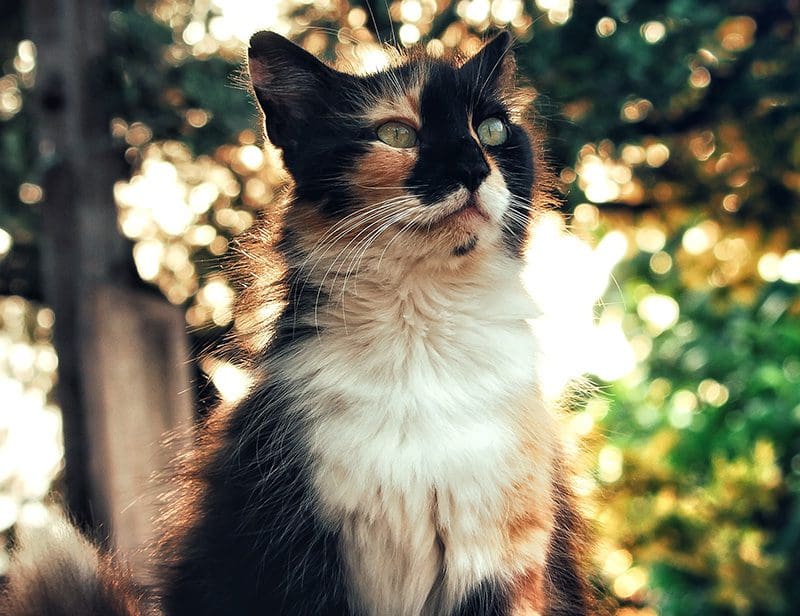
1. Calico Cats refers to a coat pattern.
Much like Tuxedo Cats and Tabby Cats, Calico refers to a coat pattern rather than a breed of cat.
The calico coat pattern is always a three color coat one of which must be white.
White, black, and orange is one of the calico patterns.
If you see cat that is grey, cream, and white, that is called a dilute calico.
Calico cats are actually Tortoiseshell cats with white in their coat. Another name for a Calico cat is a “Tortoiseshell and White”.
Some cat fanciers will claim that a Calico cat must have four white paws to be considered a Calico and not just a “Tortoiseshell and White”.
2. Calico Cats are lucky!
According to folklore, the Calico Cat is believed to be lucky and able to bring their owner good fortune!
Although, we’re pretty sure that all cats tell their owners that.
3. Most Calico Cats are female.
Most Calico cats are female, but not all.
Males are very rare but they do exist.
Male Calico cats account for only 1% of Calico cats and are born sterile.
4. The Calico Cat is the state cat of Maryland.
The orange, white, and black colors of the Calico Cat match both the state bird (The Baltimore Oriole) and the state insect (The Baltimore Checkerspot Butterfly).
And so, in 2001, the Calico Cat became Maryland’s state cat.
Siamese Cat Facts: (If You Please)

1. Siamese Cats are believed to be from Thailand originally.
Hundreds of years ago, the first Siamese Cats are thought to have originated in Thailand.
However, the breed of cat that is traditionally thought of as Siamese today looks quite different than its original ancestor.
2. Siamese Cats are VERY social.
Siamese cats are thought to be socially intelligent and are playful from when they are kittens into adulthood.
They will often bond strongly with their human owner as well as other cats.
3. Siamese Cats can sound like a human baby.
The meow of a Siamese Cat is very distinctive and has been compared to the sounds that a human baby makes.
4. Siamese Cats can sometimes get depressed.
Siamese Cats are very social and are considered to be extroverts.
If they are left alone for long periods of times, they can become depressed.
For this reason, Siamese Cats are often bought in pairs so that they always have a friend around.
Random Cat Facts: (The Grand Finale of Cat Facts)
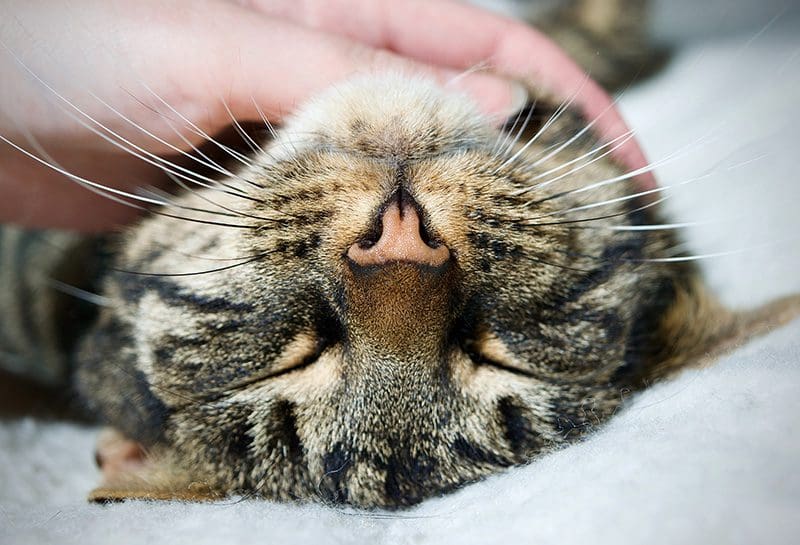
1. Milk can upset a cat’s tummy.
When cats grow up, most of them become lactose intolerant.
So, if you give your cat milk, he will probably get a tummy ache!
2. Cats can detect earthquakes.
Cats seem to have a heightened ability to detect vibrations.
It is believed that this allows them to detect an earthquake before humans can.
Maybe all that purring experience allows cats to become rumble detection experts.
3. Black Cats are good luck?
Depending on where you live, black cats are actually considered to be good luck!
In Britain and Australia, black cats are thought to be lucky.
However, in much of Europe and North America, black cats are thought to be bad luck.
Black cats think that everyone, everywhere should consider them to be good luck.
4. Cats don’t look for fights, except when it comes to defending their territory.
Cats are not confrontational in general, however, they ARE territorial.
Most cat fights are the result of a disagreement over territory.
5. Isaac Newton created the first cat door.
He had a cat that he affectionately named “Spithead”.
Spithead would create quite a fuss at the door when Isaac was working on his experiments.
So, Isaac Newton did the only reasonable thing.
He hacked a hole in the base of the door so that Spithead could come and go as he pleased.
Conclusion
That brings us to the end of our HUGE list of cat facts!
We hope you enjoyed this cat facts article as much as we did.
Cats are truly one of a kind! (Just ask yours. They’ll tell you.)
Ready for More Cat Articles?
Please check out our Cat Blog for a full listing of all of our cat articles!
Join Our Mailing List!
We hope you enjoyed reading this article! The Absolute Animal Care Blog features articles that contain our best recommendations for dog and cat wellness, training strategies, and products.
Please join our mailing list to receive updates when new articles are released!
Pie Charts: All pie charts were created by Absolute Animal Care. If you’d like to use them, please link to this article to credit. Thank you!
Me-Wow Cat Photo by Absolute Animal Care
Egyptian Sphinx and Pyramid Photo by Francisco Gomes
Girl Holding Cat Photo by Veronika Homchis
Cat in Party Hat Photo by Cristina Hernández
White and Gray Furry Cat Photo by Mikhail Vasilyev
Cat with Butterfly on Nose Photo by Karina Vorozheeva
Maine Coon Cats in Chair Photo by Bob Commander
Orange Cat on Chair on Photo by Adryan RA
Tuxedo Cat Photo by Anders Nord
Calico Cat Photo by Abdullah Öğük
Siamese Cat Photo by Alex Meier
Cat Chin Scratch Photo by Nora Hutton
